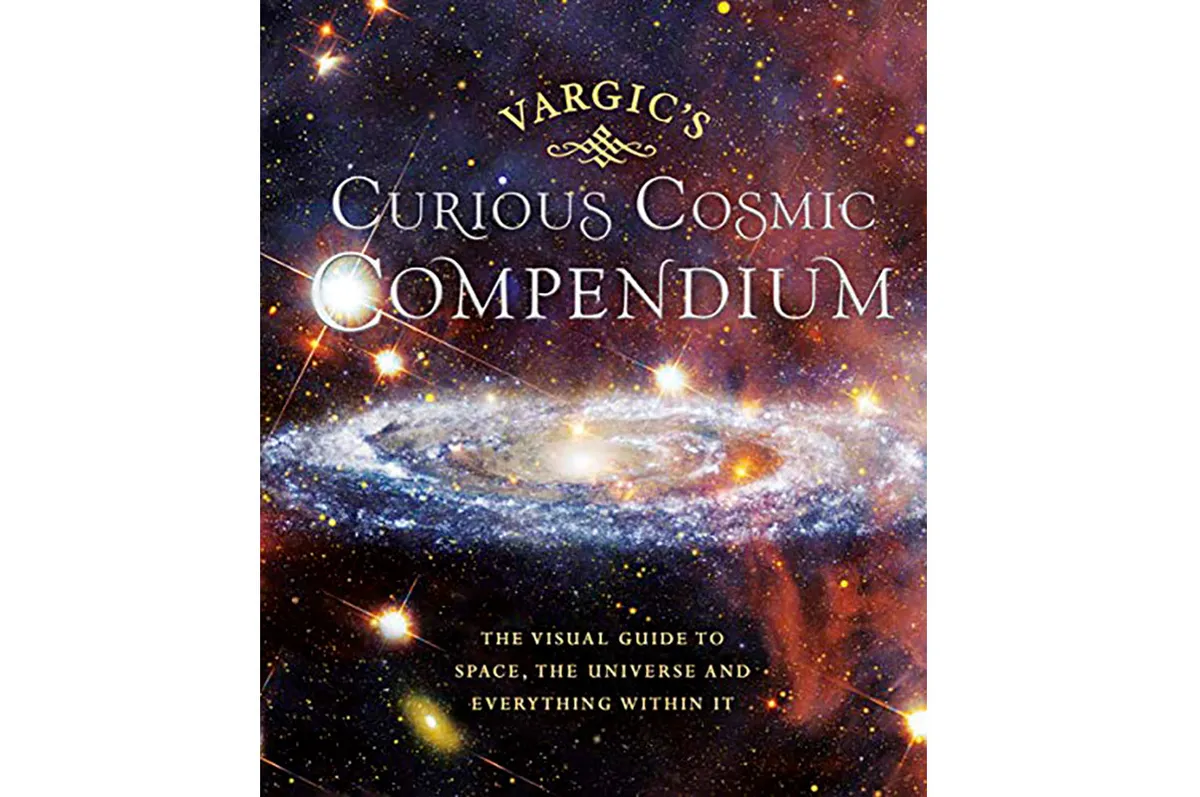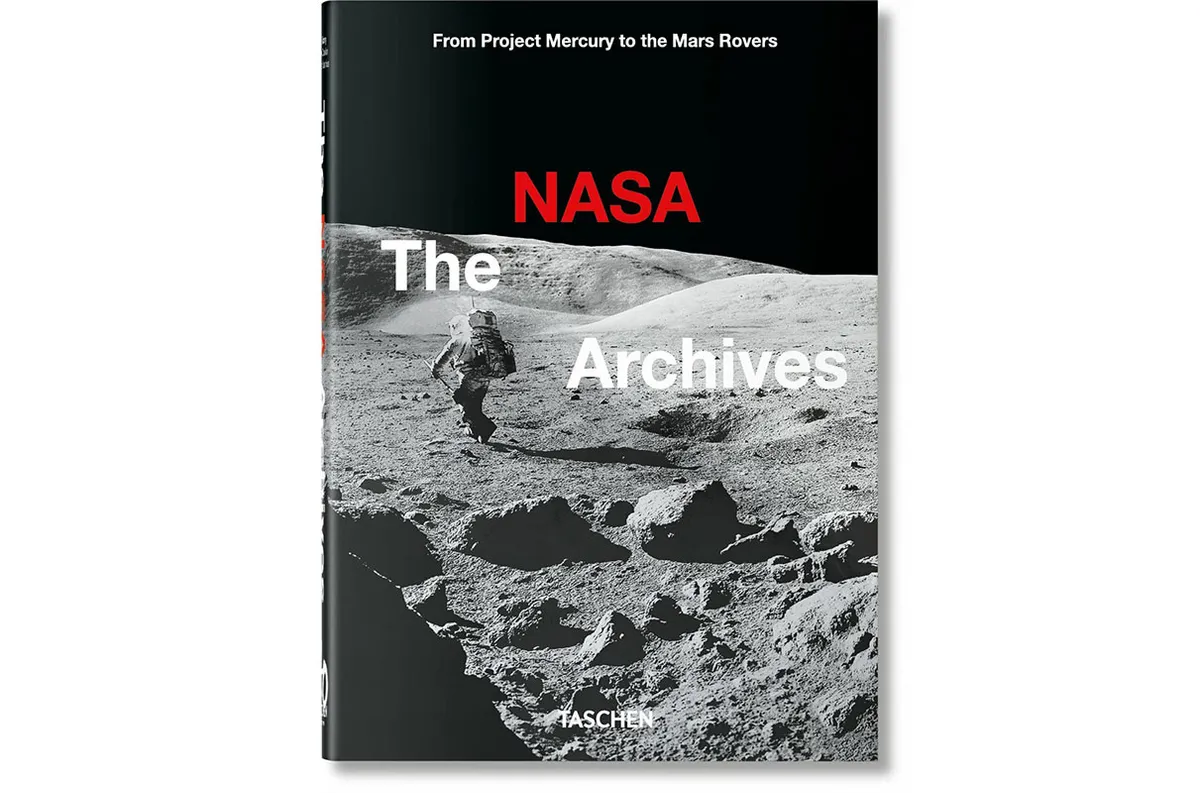“Space is big. Really big. You just won't believe how vastly, hugely, mind-bogglingly big it is.”
Douglas Adams pretty much nailed it when The Guide in his iconic sci-fi series The Hitchhiker’s Guide to the Galaxy tries to explain quite how big our Universe is. We know that it is about 13.82 billion years old, and contains more than a trillion galaxies, so when you take into account there are between 100 and 400 billion stars in our Milky Way, then yes, space really is ‘mind-bogglingly big’.
And what better way to celebrate the absolute vastness of the great night sky than by burying your head in one of these extraordinarily big books about space?
SuperSpace: The furthest, largest, most incredible features of our Universe

Let’s kick off this big list with something for the little ones. SuperSpace is a weighty tome packed with out-of-this-world facts, giant, full-page photos of planets, moons, and their landscapes, as well as detailed illustrations of spacecraft and landers.
Each page is laid out with quick stats and facts, key information, and a decent chunk of detail about whatever the spacey subject is. For example, did you know that NASA’s Curiosity Mars rover has 17 cameras, or that Jupiter’s Great Red Spot is so wide it could swallow up Earth?
The bold pictures and easy-to-read info makes SuperSpace one of the best children's books about space.
Vargic’s Curious Cosmic Compendium

There is something beautiful about staring at maps, pinpointing the places you’ve been or want to go, hunting for unknown areas and geographic oddities, but for the young Slovakian illustrator Martin Vargic, his maps elevate the experience to another level.
His work first went viral in 2014 with the delightful Map of the Internet 1.0, and his latest cartographic masterpiece, Vargic’s Curious Cosmic Compendium, is a beautifully illustrated guide to the Universe and everything in it.

Scale is a big thing in this book, plotting together the relative sizes of known exoplanets, rockets, Moon landings, asteroid impacts (as seen in the above spread), as well as a whole host of other interesting things about our Solar System and beyond. It’s a busy, but beautifully big fact-filled space book.
The Planets

If there was anybody the British public trusted more than Professor Brian Cox to give them a wonderful and in-depth account of how the planets in our Solar System formed, you’d have to travel to the far corners of the Milky Way to find them.
Accompanying the BBC series of the same name, The Planets tell the dramatic tale of how the celestial bodies that orbit our Sun were formed, and the pioneering missions humankind made to understand them.
Covering everything from our ancient ancestors’ relationship with the planets, to the most up-to-date telescopes and probes currently pointing their instruments at them, the book is written in such a way that you can easily dip in and out of a particular section, or cover-to-cover.
Either way, if you enjoyed the series (which is well worth a watch if you haven’t seen it already), this is a brilliant book for delving a little deeper into our nearest neighbours.
Cosmos: The Art and Science of the Universe

Although we’ve all seen photographs taken by the astronauts who first landed on the Moon, Martian surfaces by the Mars rovers, or the astronomical wonders captured by telescopes like Hubble, humans have been looking to the stars and illustrating them for centuries.
Unlike the other space books on this list, which for the most part focus on photography, this beautiful publication is like having your own art gallery on your coffee table, chronicling how we perceived our skies through art and sculpture, reflecting our understanding of space at the time and giving an insight into the cultural impact celestial events had on society.
If you think a book about art history is a bit too high-brow for you, then don’t worry, the pictures alone are dreamy to look at, and the accompanying text is written in such a way to get even the most art-illiterate space fan up to speed.
Planisphere and Starfinder

Of course, you don’t have to bury your head in a book to take in the wonders of the night sky – you could always just, you know, look up once the Sun has gone down. Of course, it helps to know what you’re looking at.
For anyone looking to get into stargazing, this astronomy book is a brilliant guide on how to get things started, explaining why the stars align in a certain way, what constellations to look out for, and how to set up your telescope.
Alongside some suitably cosmic astrophotography, there is also a monthly sky guide with key dates and celestial events, and a removable planisphere, a sort of star map, that will quite literally point you in the right direction.
Earth from Space
Ok, this technically isn’t a big book about space, but it definitely a big book from space; one that looks down on the planet we call home from 400 kilometres into the atmosphere.
Since the first early humans etched maps into the tusks of mammoths pinpointing the best hunting grounds, we’ve been striving to find better and more accurate ways of depicting our planet from the skies. Developments in the 20th Century took this to new heights.
The invention of the airplane and then rockets meant we could image our Earth from further and further up, all beautifully depicted in this marvelous book.
Earth from Space accompanies the BBC series of the same name and is packed full of beautiful images of our planet that puts anything from your favourite map apps to shame. You can see how rivers carve their way through valleys, the sprawl of cities over the decades and awesome power that nature (and indeed human-driven climate change) has on Earth.
Spaceflight: the complete story, from Sputnik to Curiosity

If you want a book to celebrate the Moon landing, then Spaceflight is probably the best of the bunch, not least because the foreword was written by none other than Apollo 11 astronaut Buzz Aldrin.
As well as the Moonwalker’s opinions on the past, present and future of space travel, the book is bursting with details about every significant space mission we’ve undertaken, from the Soviet satellite Sputnik in 1957 to the habitats future space travellers might one day call home.
There are also pages devoted to things like NASA’s mission patches or the inner workings of a space suit, and is filled with potted biographies of significant figures, so whichever page you open up at, there is always something to learn or a marvellous picture to see.
The NASA Archives. 60 Years in Space

When it comes to big books, this is by far and away the biggest we’ve ever seen here at BBC Science Focus. We’re guessing it tops the scales at about five kilos, so if you ever wanted to send a book into space, this one would need a heck of a lot of rocket fuel. But it’s well worth it.
There are more than 400 images, illustrations, and photographs packed into this behemoth, most of which you’re unlikely to have seen before, so as a visual treat in itself, it is an absolute delight to thumb your way through.
But you also get essays about the past, present, and future of the American space agency, information about the Moon, planets and the International Space Station, and absolute bragging rights about who has the biggest and best space book furnishing their coffee table.
Discover more fascinating science books:
- Recipe books to tantalise your scientific senses
- Top 5 Richard Feynman books
- Five of the best science books for kids
Follow Science Focus onTwitter,Facebook, Instagram,and Flipboard
